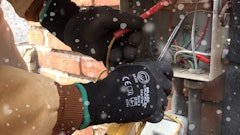In a sign that the economy is still in a slump, private nonresidential construction spending slipped 0.4 percent in July, according to the September 1 report by the U.S. Census Bureau. However, private nonresidential construction spending is 5.7 percent higher from the same time last year. Total nonresidential construction spending – which includes both privately and publicly financed construction – was $533.7 billion in July, down 1.1 percent for the month and down 1.7 percent from July 2010.
Eleven construction subsectors posted decreases for the month including manufacturing, down 6.2 percent; conservation and development, 5 percent lower; and public safety, down 4 percent. Construction subsectors with the largest decreases on a 12-month basis were lodging, down 24.6 percent; religious, 20.8 percent lower; and sewage and waste disposal, down 13.7 percent.
In contrast, five of the sixteen construction subsectors posted increases for the month, including water supply, up 3.9 percent; religious, 2.3 percent higher; and commercial, up 2.2 percent. Four construction subsectors saw increases in construction spending from the same time last year including power, up 19.1 percent; commercial, 15.1 percent higher; health care, up 1.2 percent; and communication, 0.9 percent higher.
Public nonresidential construction spending fell 1.9 percent in July and is down 25.4 percent year-over-year. Meanwhile, residential construction spending dipped 1.6 percent lower for the month, but is up 4.1 percent compared to the same time last year. Overall, total construction spending decreased 1.3 percent in July, but is up 0.1 percent compared to July 2010.
"We are now facing a period of declining spending in both public and private construction categories," said Associated Builders and Contractors Chief Economist Anirban Basu. "The momentum in commercial construction spending continued through July, but with financial market volatility and economic uncertainty generally on the upswing, it is likely that lending has become more cautious, which will translate into diminished commercial construction starts going forward.
"Today's construction spending data are now reflecting the renewed weakness that began to pervade the economy earlier this year," Basu said. "The most recent gross domestic product data indicated that the economy grew less than 1 percent on an annualized basis during the first half of this year, and that inevitably will translate into weaker construction spending during the months ahead.
"The construction data are also reflecting the impact of diminished state and local government fiscal health. Spending declines were posted in public safety-related construction, education-related construction, and sewage and waste," said Basu. "Decline in these categories is likely to persist for the rest of this year in much of the nation due to a general lack of revenue growth among the nation's local governments."
To view the previous spending report, click here.

















